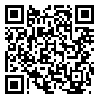2- Mental Health Research Center, Tehran Institute of Psychiatry- School of Behavioral Sciences and Mental Health, Iran University of Medical Sciences ,
3- Family Researcher, Shahid Beheshti University
Objectives: The present study has been performed by the aim of investigating the predictive role of the ego strength, the object relations and the defense styles on the mental health. Method: The community of the present study consisted of students of Tehran University of Medical Sciences and Iran University of Medical Sciences. Total of 700 subjects (including 280 males and 420 females) were selected as clustering multi stage methods and they completed the questionnaires of Barron's Ego Strength Inventory (ESS), Bell's Object Relation Inventory (BORI), Defense Style Questionnaire (DSQ-40) & General Health Questionnaire (GHQ). Data were analyzed by using of the Pearson correlation and hierarchical regression. Results: The ego strength, the object relations and the defense styles had meaningfully correlation to the mental health. Also, the analysis of hierarchical regression demonstrated that these variables can determine 37% of variance of the total score of mental health in students. Conclusion: Generally, understanding the effective ingredients on mental health and their predictive rate assists not only to acquire the preventive approach but also to improve the mental health. Furthermore, it determines the direction of the treatment and also it facilitates the process of therapy.
Received: 2016/02/20 | Accepted: 2016/02/20 | Published: 2016/02/20
| Rights and permissions | |
 |
This work is licensed under a Creative Commons Attribution-NonCommercial 4.0 International License. |


